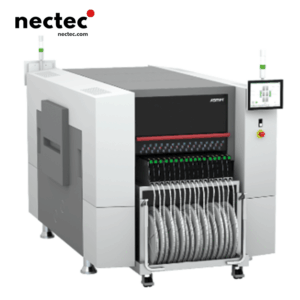In today’s manufacturing landscape, efficiency and cost-effectiveness play critical roles in the success of any business. As companies continuously seek ways to optimize their operations, automation has emerged as a powerful tool. Among those automation solutions, pick and place machines have become a staple, particularly in the electronics assembly sector. However, new machinery can be prohibitively expensive, leading many businesses to consider second-hand options. In this blog post, we will delve into the myriad benefits of investing in second-hand pick and place machines.
فهم ماكينات الالتقاط والوضع
Before discussing the benefits of second-hand machines, it’s essential to understand what pick and place machines are. These automated devices are designed to quickly and accurately place components onto a printed circuit board (PCB). The key functions of these machines include loading components from reels or trays, transferring them, and accurately placing them onto the PCB. This automation not only speeds up the manufacturing process but also significantly reduces the risk of human error.
وفورات في التكاليف
The most obvious advantage of purchasing a second-hand pick and place machine is the significant cost savings. New machines can come with a hefty price tag, often reaching into the hundreds of thousands of dollars. In contrast, a well-maintained second-hand machine can offer similar performance for a fraction of the cost. For start-ups or smaller companies, these savings can be crucial, enabling them to allocate funds to other essential areas, such as research and development or marketing.
الجودة والموثوقية
Many second-hand machines come from reputable manufacturers known for their quality. Businesses often upgrade to newer models while still having perfectly functioning machines available for resale. It’s common for second-hand machines to have been refurbished or properly maintained, ensuring reliability. When purchasing from trusted sources, buyers can conduct thorough research and request performance reports to assure they are getting a machine that can perform to expectations.
Environmental Impact
In a world increasingly aware of sustainability, opting for second-hand machinery aligns with environmentally friendly practices. Manufacturing machinery generates significant waste due to its short lifespan and the materials used in creating them. By choosing a second-hand pick and place machine, businesses can help reduce this waste, giving a second life to machinery instead of contributing to landfills. It’s a step towards a greener business operation.
Access to Established Technology
While the newest technology often features advanced capabilities, established models have proven their efficacy in a variety of settings. Second-hand machines typically come with specifications that make them adaptable to a range of production requirements. This adaptability can be particularly advantageous for businesses that want to test different configurations or production lines without investing in unproven technologies.
مهلة زمنية أقصر
When purchasing new technology, businesses may face long lead times for machine delivery as manufacturers deal with production schedules. In contrast, second-hand pick and place machines are often available immediately, allowing businesses to implement shifts in production without significant downtime associated with waiting for new machinery. This immediate availability can enhance productivity and help maintain production schedules.
Adaptability and Upgradability
Another advantage of second-hand pick and place machines lies in their adaptability. Many older models can be upgraded with newer technologies or software, permitting users to enhance productivity without purchasing an entirely new setup. This incremental investment approach allows businesses to improve their manufacturing capabilities over time, maintaining competitiveness with minimal financial strain.
The Importance of Due Diligence
While there are undeniable benefits to purchasing second-hand machines, it is essential to conduct thorough due diligence. Companies should evaluate the machine’s history, including past maintenance and any necessary repair work. Consulting with industry specialists and considering recommendations can help guide buyers toward making informed decisions. A well-informed purchase can lead to maximizing the advantages of acquiring a second-hand machine.
Conclusion – A Viable Investment for Future Growth
In conclusion, second-hand pick and place machines present a unique opportunity for businesses to enhance their operations without incurring excessive costs. From significant savings to environmental benefits and immediate availability, there are numerous reasons to consider this option. Conducting thorough research and ensuring proper maintenance history can help organizations find reliable machinery that aids in continuous growth and efficiency in production.







